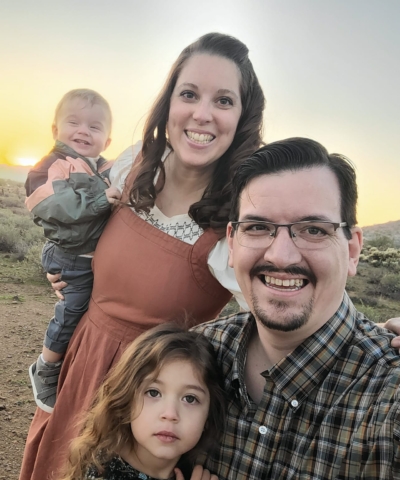Understanding Adoption
Many men in our XXY community find out they are infertile when trying to have kids. Understanding adoption can be one of the many ways to build a family. We have built this extensive list to help you navigate the unknown while looking for different options. In the United States, people use three common avenues to adopt a child into their family: adoption through the foster system, domestic adoption of a newborn, or international adoption of a child at any age. For domestic adoption, you may work with an adoption agency or move through the process independently with a lawyer.
No matter your path, welcome a child (or children) into your family. The adoption process can be lengthy, taking, on average, six to twelve months (if not longer) to complete. Adoption can take a long time, as there are many decisions to make at each step of the process. This is an example of the adoption process, excluding all the nuances that may go into each adoption case:
- Your family decides that adoption will be how you welcome a child/children into your family.
- Do your research and choose an adoption agency or private adoption lawyer.
- Submit your application, an overview of detailed information about your family. Also, the type of child you feel most suited to adopt.
- You go through a home study process. The amount of detail and time required to perform the home study varies by state, agency, and adoption type. It will likely include caseworkers’ visits, criminal and financial background checks, and physical and mental health assessments (NYT).
- You attend comprehensive adoption training that helps you understand the adoption process and its impact on your family and the adopted child.
- You work with a caseworker to find the appropriate child for your family.
- The agency decides a child is ready to meet your family, and you begin visiting.
- You bring the child home for a supervisory period. Make sure the placement is a good match for your family.
- The adoption is finalized in court, and your family assumes full legal rights and obligations for the child’s care.
(Adoptive and Foster Family Coalition, New York)
All out-of-pocket costs listed here are general estimates in US dollars gathered from various sources. Please contact lawyers or adoption agencies for more accurate information about your case.
The U.S. Foster Care System
 The United States foster system was established to place children in the temporary custody of the state. During this time, the children’s birth parents are given opportunities to complete services. This will allow their children to be returned to them if it’s in the children’s best interest. Over half of the children entering the foster care system are reunited with their birth families or adopted by relatives or foster parents. There are 120,000 children and teens in the foster system who cannot be reunited with their birth families through no fault of their own and are waiting for secure, permanent homes. Though children in the foster care system can range in age from newborn to 21, the average age of a child in foster care is eight years old (Adopt US Kids).
The United States foster system was established to place children in the temporary custody of the state. During this time, the children’s birth parents are given opportunities to complete services. This will allow their children to be returned to them if it’s in the children’s best interest. Over half of the children entering the foster care system are reunited with their birth families or adopted by relatives or foster parents. There are 120,000 children and teens in the foster system who cannot be reunited with their birth families through no fault of their own and are waiting for secure, permanent homes. Though children in the foster care system can range in age from newborn to 21, the average age of a child in foster care is eight years old (Adopt US Kids).
According to the national project Adopt US Kids, “An increasing number of states view foster care and adoption as a continuum and are establishing policies that encourage parents considering adoption to be foster parents first. For example, some states require that families seeking to adopt also take foster parent training and get approved to foster.” Adopt US Kids has an excellent list of the reasons why getting approved to be a foster parent before adoption can be beneficial for your family and the children who may be placed in your care.
It’s important to remember the ultimate goal of fostering is family reunification. As a foster family, you have to be prepared for the genuine possibility the children you may have hoped to adopt are returned to their birth parents or placed with relatives. However, this does not make the fostering experience any less rewarding.
Associated Costs
Adoption through the foster care system is usually state-funded, and there are usually little to no fees. According to Child Welfare Information Gateway, “Title IV-E of the Social Security Act assists families adopting eligible children from foster care in two forms: a one-time, non-recurring reimbursement for adoption transaction costs or recurring monthly maintenance payments for the child’s care.” States may reimburse adoptive families for certain expenses up to $2,000. Foster and adoptive parents may also receive additional support such as health care coverage for the child, educational vouchers, waivers, and post-adoption support (NYT).
Understanding Adoption: Adopting Domestic
 To adopt a newborn within the United States, you will have to work with a lawyer for an independent adoption or an adoption agency. An adoption agency can be a for-profit or not-for-profit business that assists families in managing all aspects of their adoption process. An independent adoption with a lawyer may require you to work on all the elements of the adoption on your own.
To adopt a newborn within the United States, you will have to work with a lawyer for an independent adoption or an adoption agency. An adoption agency can be a for-profit or not-for-profit business that assists families in managing all aspects of their adoption process. An independent adoption with a lawyer may require you to work on all the elements of the adoption on your own.
If you want to adopt a newborn, you’ll have to go through the process of finding a birth mother. Adoption agencies may have a list of birth mothers looking for a loving family to adopt their child, or you may be responsible for finding a birth mother through advertising on websites or in print. When adopting a newborn from another state, you’ll be expected to travel to the location of the birthing mother for the birth of the baby and then stay with the baby until they are released from the hospital. Then you will have to stay in the local area where the baby was born until the Interstate Compact on the Placement of Children (ICPC) is finalized, usually taking 7-10 business days.
Associated Costs
Almost all states have laws that provide some regulation of the fees and expenses adoptive parents are expected to pay when arranging an independent adoption. Independent adoptions with a lawyer can cost from $15,000-$40,000. Fees can cover the birth mother’s medical expenses, legal representation, court fees, and more. Child Welfare Information Gateway has created this resource (current as of 2017) with state regulations on independent adoption costs.
Costs when adopting through an agency may vary from state to state but may range from $20,000-$45,000. This may include the costs of the home study, court and legal fees, pre-adoption and post-adoption counseling for birth parents, birth parent medical and legal expenses, adoptive parent preparation and training, social work services needed to match a child with a prospective family, interim care for a child, and post-placement supervision until the adoption is finalized (Child Welfare Information Gateway).
Employer-provided benefits (Federal or State tax credits, subsidies, loans, and grants) may offset some adoption costs (childwelfare.gov).
Understanding Adoption: Adopting Internationally
The international adoption process can be complex; every country has different adoption requirements. The list of countries allowing the adoption to US families is constantly in flux based on political and economic relationships. The timeframe for international adoption may be three months to several years; each country processes adoptions differently. Most countries that allow international adoption to the United States require adoptive parents to travel to the country. The number of trips, length of stay, and adoption fees may vary.
When selecting an adoption agency, you will want to ensure the agency you are working with is Hague-accredited. The Hague Convention “aims to prevent the abduction, sale of, or trafficking in children, and it works to ensure that intercountry adoptions are in the best interests of children” (US Department of State).
When working with an adoption agency, the medical and familial history of the child you are adopting may be minimal, if available. Families who adopt a child from another country should be prepared to address any physical or mental health concerns that may arise as the child gets older.
The Department of Health and Human Services has created an excellent resource for families who want to learn more about the international adoption process.
Associated Costs
In addition to the fees associated with travel to the country and agency fees, there may be additional costs related to international adoption, including immigration process fees, government fees, and donations to the orphanage (AFFCNY). International adoptions may cost from $20,000-$50,000.
Parental Leave Policies
The Family Medical Leave Act (FMLA) states that companies with 50 or more employees, any government agency (including local, state, and federal employers), and public and private elementary and secondary schools of any size, are required by Federal law to grant parental leave to employees who are fostering or who have adopted a child. Both foster/adoptive parents are eligible for up to 12 weeks of unpaid leave upon the birth or adoption of a child.
An employee must have worked for the employer for at least 12 months to be eligible. Worked at least 1,250 hours during the 12 months preceding the start of the leave. Also, be employed at a worksite where the employer has at least 50 employees within 75 miles. FMLA ensures that employees can return to their current or equivalent roles. And their healthcare benefits will remain active when they are on leave.
These are other resources we have been accumulating:
For more information and stories about adoption, visit The National Infertility Association.
https://www.americanadoptions.com/adopt/adoption-vs-ivf
https://www.childwelfare.gov/pubPDFs/s_costs.pdf
https://choicenetworkadoptions.com/
http://buildingyourfamily.com/
https://creatingafamily.org/adoption/resources/
https://www.americanadoptions.com/adopt/domestic_international
https://adoptionnetwork.com/types-of-adoption-options/domestic-vs-international-adoption/
https://www.adoptuskids.org/adoption-and-foster-care/overview/what-does-it-cost
https://www.childwelfare.gov/pubPDFs/f_adoptoption.pdf
https://travel.state.gov/content/travel/en/Intercountry-Adoption.html




Leave A Comment